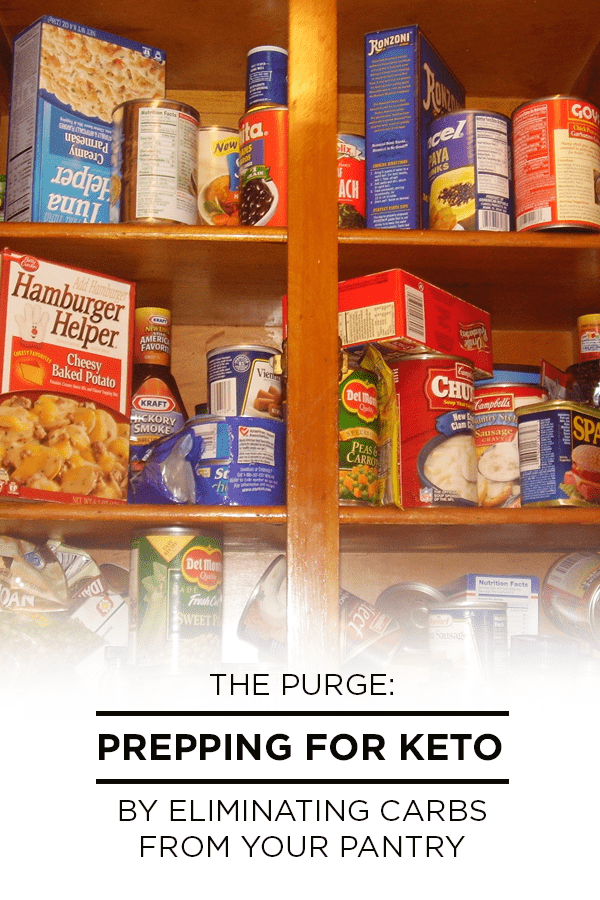The background
One of the most challenging things about breaking old habits and eating styles is that they’re ingrained within us, making relapse a constant concern. This is especially true when going from a typical carb-loaded Western diet to keto because it’s a complete rewiring of how we approach food.
Although healthy, sustainable, and capable of producing phenomenal results in a short period without sacrificing your physical wellbeing, the single most common criticism of the keto diet is that it’s difficult to stick to. That feedback is valid, in many ways, if only because you’re going against the grain of how our world is programmed, nutritionally speaking.
On the flip side, there are aspects of the keto diet that can make for a smoother transition. First, when you trade out one food group (carbs) for another (fats), you can completely revamp your refrigerator and pantry to eliminate unhealthy carbs; i.e., anything but vegetables that are keto-friendly. This makes it easier than just trying to cut calories because you can remove temptations from your kitchen, rather than exclusively relying on self-control to keep your calorie count down.
Step one: the purge
Set aside several hours and go through every item in your fridge, freezer, and cabinets. Get rid of all pasta, pre-packaged and processed meals, sugary sauces, dressings, and other condiments. These aren’t always easy to nail down; for example, mustard is great on keto, but ketchup is usually loaded with sugar/high-fructose corn syrup. Read the nutrition labels for everything you choose to keep; if it isn’t on the package, look it up online.
Step two: the replacements
Make a list of the items you can’t do without (or at least, would prefer to keep!) and search for healthier options. If mayonnaise is something you like, surrender the Miracle Whip in favor of avocado oil-based mayonnaise, which has ¼ the carbs. You can find similarly healthy options for many of the things you love.
Outline your favorite keto-approved snacks, like various cheeses, nuts, and proteins. If you love something that requires a recipe, such as guacamole, research a keto recipe for it and try it out before you actually start keto.
Step three: the transition
Pick a specific date that you’re going to start keto and transition into it. Those who go from a carb-heavy diet on a Tuesday into full keto on a Wednesday will have a difficult time because they’re shocking their diet, cooking style, and routines. This maximizes the possibility of experiencing adverse side effects, such as keto flu, while also increasing the chance that you’ll cheat with carbs.
Pick a series of low-carb dishes you want to try and make one every day in the two weeks leading up to your keto D-Day. Let’s say your breakfast consists of cereal (hot or cold); add eggs and bacon and slowly wean yourself off the grains. This will do a couple of things: first, you’ll be able to experience what keto cooking is like. It isn’t entirely different from carb cooking, but it does involve some significant adjustments.
You’ll also build up a repertoire of keto meals that you really enjoy and are confident in preparing. This goes a long way toward preventing relapses. Finally, transitioning into keto minimizes the chance of experiencing any negative side effects.
Family considerations
If you have a significant other or family members who won’t be joining you on keto, you can’t be as black and white with your purge. One thing you can do, however, is to reorganize your kitchen, pantry, and fridge. Create “keto” and “non-keto” cabinets, drawers, and sections; this way, when you’re cooking for yourself, you’ll only have to look at ingredients that you can eat.
When you prepare keto meals, make extra and put a bit on everyone’s plates. Choose foods that are an easy switch and avoid ones where fundamental ingredient changes will be noticeable (cauliflower will never replace mashed potatoes, as much as I wish it could). Record which ones are winners and begin replacing entire meals with keto options. Over time, you’d be surprised how much transition can happen if you take it gradually and ease your family into it.
The keys to success are planning, preparation, and consistency. Transitioning slowly and steadily is far more likely to get you where you want to be than abrupt, drastic changes. Regardless of what challenges you face, there’s a way to overcome them if you think hard enough.
What was or will be the most challenging factor in your life when going from carbs to keto? I’d love to hear your thoughts in the comments!
NUTRITIONAL DISCLAIMER
The content on this website should not be taken as medical advice and you should ALWAYS consult with your doctor before starting any diet or exercise program. We provide nutritional data for our recipes as a courtesy to our readers. We use Total Keto Diet app software to calculate the nutrition and we remove fiber and sugar alcohols, like erythritol, from the total carbohydrate count to get to the net carb count, as they do not affect your blood glucose levels. You should independently calculate nutritional information on your own and not rely on our data. The website or content herein is not intended to cure, prevent, diagnose or treat any disease. This website shall not be liable for adverse reactions or any other outcome resulting from the use of recipes or recommendations on the Website or actions you take as a result. Any action you take is strictly at your own risk.
- The Brain’s Role in Weight Loss - March 11, 2019
- Making Fat Loss EPOC - March 8, 2019
- Overcoming Plateaus - March 6, 2019





Just revamping the cubbards and fridge will be a challenge. Expensive.. But will see what can be done
Sweet snacks! I am a chocoholic and this will be my most difficult thing to give up, rice and bread!
Crackers and cheese will be hard for me to give up.
Sweet snacks! I am a chocoholic and this will be my most difficult thing to give up.